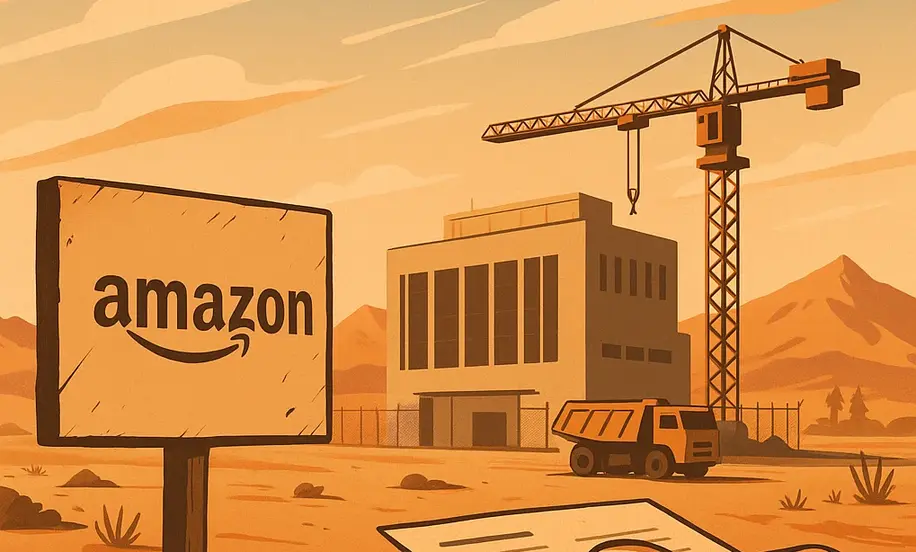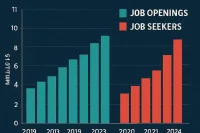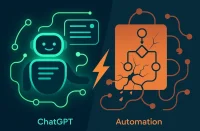Amazon’s secret plot to build a data center in the desert was exposed when Tucson became the first city to reject a massive data center proposal, but only after a huge community uprising forced the issue into the public spotlight. The project, known as “Project Blue,” was shrouded in secrecy as Beale Infrastructure worked behind the scenes with Pima County Board of Supervisors to secretly approve the sale and rezoning of county-owned land for what was later revealed to be Amazon Web Services.
The David versus Goliath story unfolded in a city already facing a 30-year drought, where residents questioned the wisdom of building a data center that would require massive amounts of water in an area prone to water scarcity. The proposed facility would have had a power capacity of 600MW – enough to power every home in Tucson – while requiring an 18-mile pipeline to connect to the city’s water supply.
The community’s victory represents a historic moment as one of the largest rejections of a data center project across the country, highlighting growing resistance to Big Tech’s expansion into water-stressed regions and the power of organized community action against corporate interests.
The Secret Deal: Behind-the-Scenes Corporate Manipulation
The project involved Beale Infrastructure, a San Francisco-based corporation backed by Blue Owl, a $30 billion investment firm listed on the New York Stock Exchange. The company worked secretly with local officials to secure a deal that would require the city to annex 290 acres of land, allowing them to procure massive amounts of water directly from Tucson Water.
The secrecy surrounding the project was so complete that even local officials were kept in the dark about the true client until a journalist from Arizona Luminaria obtained documents through a public information request. This lack of transparency raised serious questions about why a project supposedly beneficial to the community needed to be conducted in such secrecy.
The developers promised $250 million in tax revenue, 3,000 temporary construction jobs, and 180 permanent jobs, but their contract only committed to hiring 75 workers. This discrepancy between promises and reality became a key point of contention for community members who felt they were being misled about the project’s true benefits.
The Water Crisis: A Desert City’s Greatest Concern
The project faced its greatest challenge in Tucson’s water crisis. The city is experiencing a 30-year drought, and residents were deeply concerned about the project’s water requirements, which would increase the city’s water and electricity needs by potentially double over the next five years.
The data center would require more than 6% of Tucson’s annual water use, a significant amount in a region where water is already scarce. Residents questioned how the city could justify such massive water consumption when the Colorado River, a major water source, is facing unprecedented cuts due to climate change and overuse.
Water policy expert Andrea Gerlak, a professor at the University of Arizona, emphasized the difficult choices facing the region: “We just have to decide of all those users what’s most important.” The question became whether a data center’s water needs were more important than residential use, agriculture, or environmental protection.
The Community Uprising: Grassroots Resistance to Corporate Power
The project sparked a massive community uprising that brought together residents from all walks of life. The movement was led by people who felt betrayed by their elected representatives and concerned about the long-term environmental and economic impacts of the project.
Residents organized town hall meetings, protests, and public demonstrations, with hundreds of people waiting in line outside City Hall in 112-degree heat to voice their opposition. The community’s anger was palpable, with many residents expressing frustration that their elected officials were prioritizing corporate interests over local needs.
The movement gained momentum as more residents learned about the project’s true scope and the secrecy surrounding its approval. Community members questioned why a project supposedly beneficial to Tucson needed to be conducted in such secrecy and why residents weren’t given a voice in the decision-making process.
The Corporate Propaganda: Misleading the Public
The project relied heavily on corporate propaganda to sell it to the public. Town hall meetings were described as “propaganda sessions for the corporation,” featuring only representatives from Tucson Electric Power, Tucson Water, and Beale Infrastructure making the case for why the project was beneficial.
The company’s public relations strategy focused on economic benefits while downplaying environmental concerns and water usage. They claimed the project would create jobs and generate tax revenue, but failed to address the fundamental question of whether Tucson could afford to provide the massive amounts of water required.
The lack of independent voices at these meetings frustrated residents, who wanted to hear from water policy experts, environmental scientists, and other independent sources rather than just corporate representatives with a financial stake in the project’s approval.
Cut Through the Noise
Corporate spin often overshadows independent voices, leaving communities without balanced perspectives. Employers can build trust by hiring policy experts, environmental scientists, and communication professionals who bring transparency and accountability. Post your job on WhatJobs today and connect with candidates ready to drive ethical, responsible, and community-focused decision-making.
Post a Job Free for 30 Days →The Political Battle: Elected Officials vs. Constituents
The project created a political battle between elected officials and their constituents. Pima County Board Supervisor Rex Scott, who cast the deciding vote to sell the land to Beale Infrastructure, defended his decision despite widespread community opposition.
Scott argued that the project would only use 1% of the county’s total water portfolio and 6% of reclaimed or recycled water, downplaying the environmental impact. He also opposed allowing residents to vote on the project, stating, “I don’t think that in a representative democracy that you put everything to a public vote.”
This disconnect between elected officials and their constituents highlighted a broader issue of corporate influence in local politics and the tendency of officials to prioritize economic development over environmental concerns and community input.
The Environmental Impact: Water Scarcity in the Desert
The project raised serious environmental concerns in a region already facing water scarcity. It would have required massive amounts of water in an area prone to drought, potentially depleting the water table and affecting local wells.
Residents like Victoria, who moved into a new house just a few miles from the proposed construction site, were deeply worried about the potential impact on their water supply. “Our concern is obviously that this data center and the high water use will further deplete the water table and that this and other wells around here will go dry as a result,” she explained.
The environmental impact extended beyond water usage to include energy consumption, heat generation, and the long-term sustainability of building massive data centers in water-stressed regions.
The Economic Reality: Promises vs. Performance
The project promised significant economic benefits, but the reality was far less impressive. While the company touted 3,000 temporary construction jobs and 180 permanent positions, their contract only committed to hiring 75 workers.
The $250 million in promised tax revenue was also questionable, as data centers often receive significant tax breaks and incentives that reduce their actual contribution to local coffers. The economic benefits were further undermined by the project’s water requirements, which would increase costs for all residents.
The disconnect between promises and reality became a key factor in the community’s rejection of the project, as residents questioned whether the economic benefits justified the environmental and social costs.
The Victory: Community Power Over Corporate Interests
The project was ultimately defeated by organized community action. In a surprising unanimous decision, the Tucson City Council voted to kill Project Blue, marking one of the largest rejections of a data center project in the country.
The victory was celebrated by community members who had worked tirelessly to expose the project’s true impact and organize opposition. The success demonstrated the power of grassroots organizing and community resistance to corporate interests.
The defeat of Project Blue represents a significant victory for environmental justice and community rights, showing that even the largest corporations can be held accountable when communities organize and demand transparency and accountability.
The Broader Implications: A National Movement
This project is part of a broader national movement of communities resisting Big Tech expansion. Similar battles are playing out across the country in Georgia, Tennessee, West Virginia, Texas, and other states where communities are standing up to corporations like Meta, Google, xAI, and Amazon.
The concerns vary from community to community, but the common thread is a massive rift between Big Tech and small towns. Communities are questioning whether the economic benefits of data centers justify the environmental costs, water usage, and social disruption they bring.
This resistance movement represents a growing awareness of the need to protect local resources and community interests from corporate exploitation, particularly in water-stressed regions where data centers pose significant environmental risks.
The Future: Vigilance and Continued Resistance
The project may have been defeated, but the fight is far from over. Community organizers warn that the battle continues, particularly with executive orders that could preempt local jurisdictions and streamline environmental regulations.
The victory in Tucson serves as a model for other communities facing similar challenges, demonstrating that organized resistance can succeed against even the largest corporations. However, the fight requires continued vigilance and ongoing community engagement to prevent similar projects from being approved in the future.
The broader implications extend beyond data centers to include all forms of corporate development that threaten local resources and community interests, requiring sustained resistance and political engagement to protect community rights.
A Real-World Example: Maria’s Fight for Water Rights
Maria Rodriguez, a 35-year-old environmental activist from Tucson, exemplifies how Amazon’s secret plot to build a data center in the desert galvanized community resistance. After learning about the project through leaked documents, Maria organized neighborhood meetings and coordinated with other activists to expose the true scope of the water usage.
“I was horrified when I learned about Amazon’s secret plot to build a data center in the desert,” Maria explains. “We’re already in a 30-year drought, and they wanted to use more than 6% of our annual water supply for a data center. It was completely unsustainable and would have devastated our community.”
Maria’s organizing efforts included coordinating with local journalists, organizing public demonstrations, and working with city council members to ensure the project received proper scrutiny. Her work helped expose the secrecy surrounding the project and the disconnect between corporate promises and reality.
“Amazon’s secret plot to build a data center in the desert taught me that we can’t rely on our elected officials to protect us from corporate exploitation,” Maria says. “We have to organize, stay informed, and demand transparency and accountability from both corporations and our government.”
Maria’s successful organizing in Tucson has inspired her to help other communities facing similar challenges, demonstrating how local resistance can create broader movements for environmental justice and community rights.




